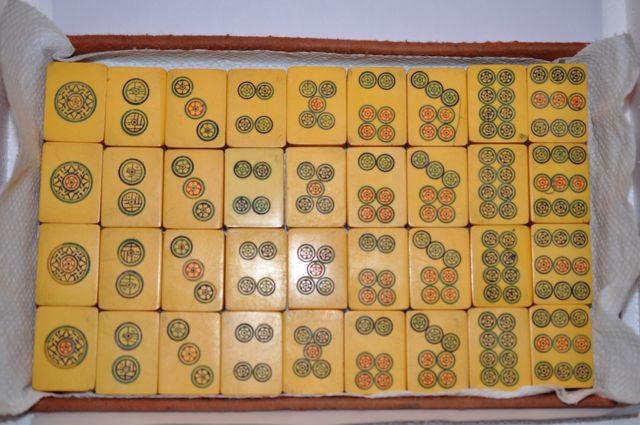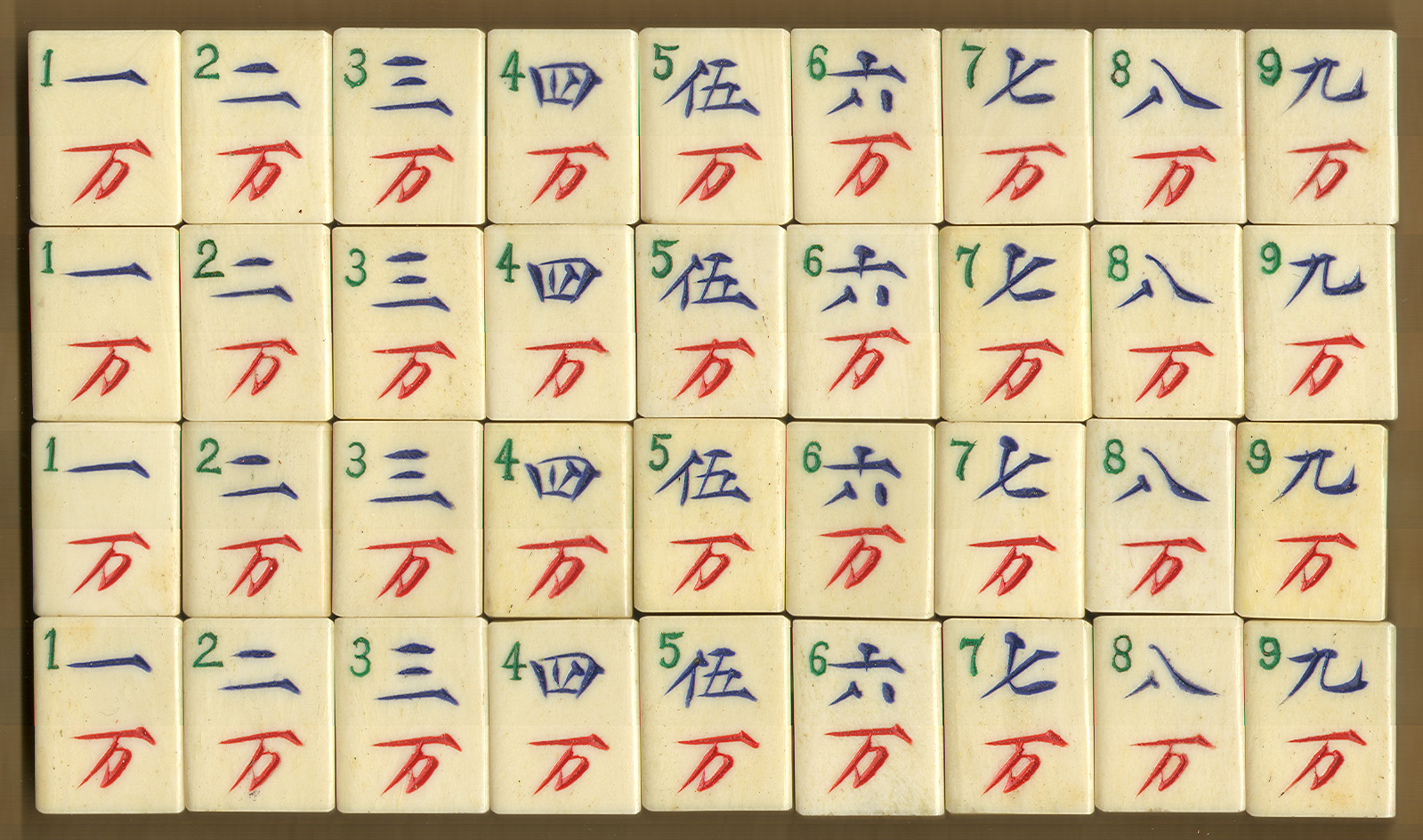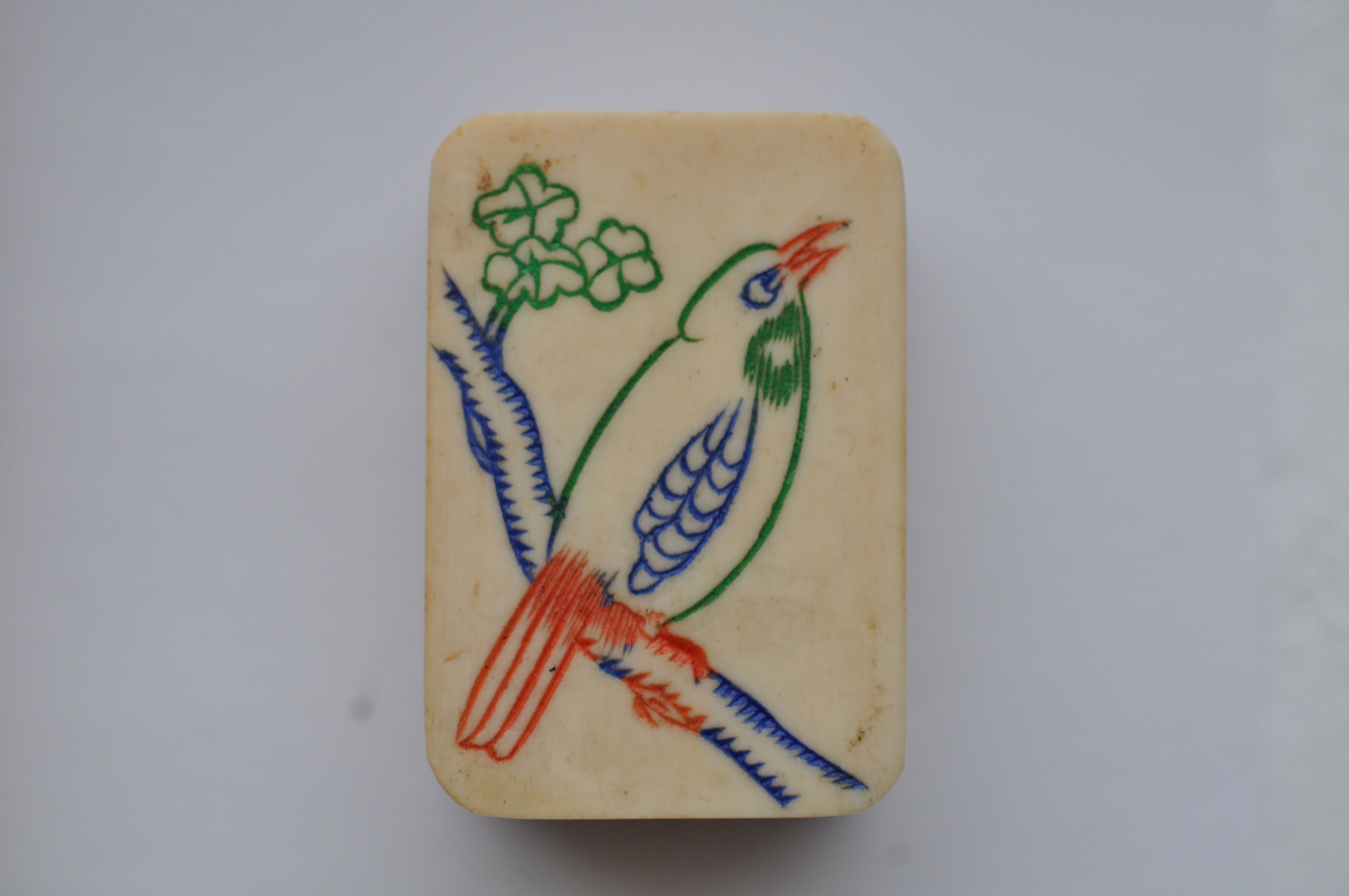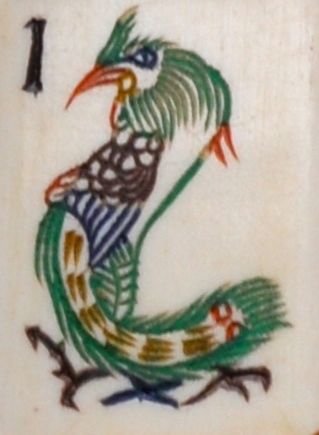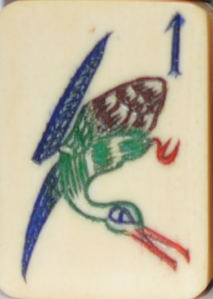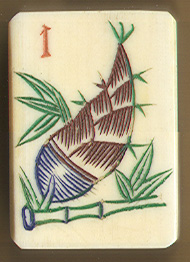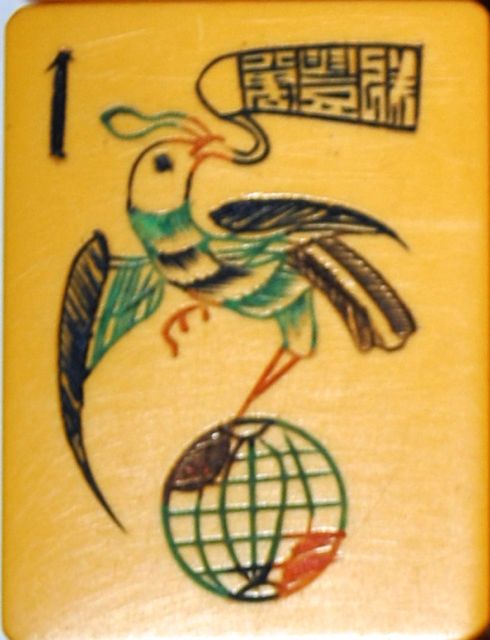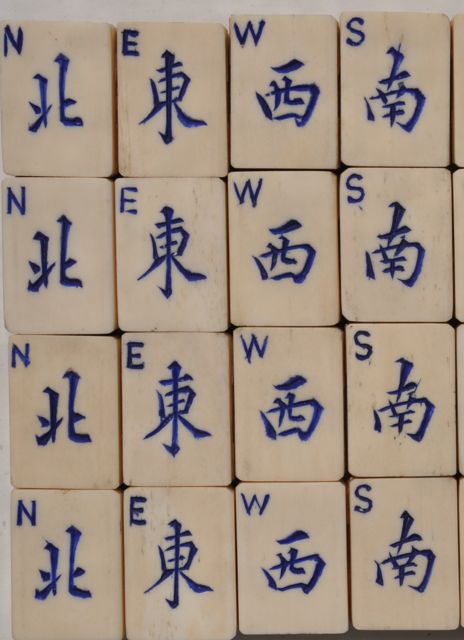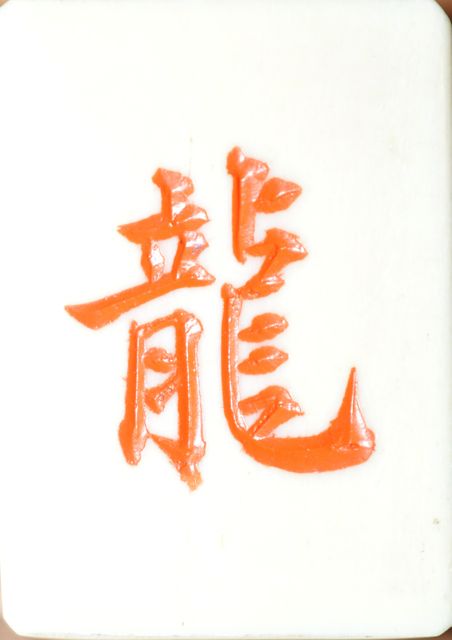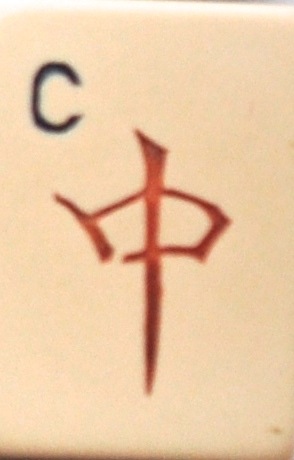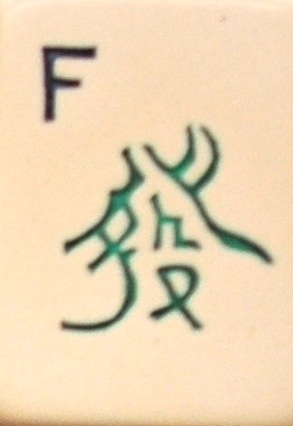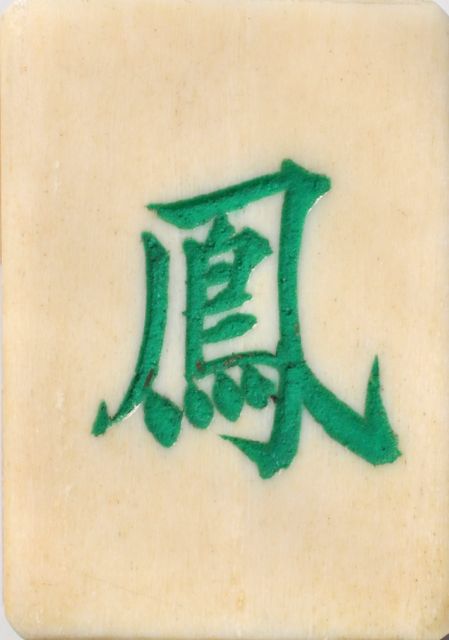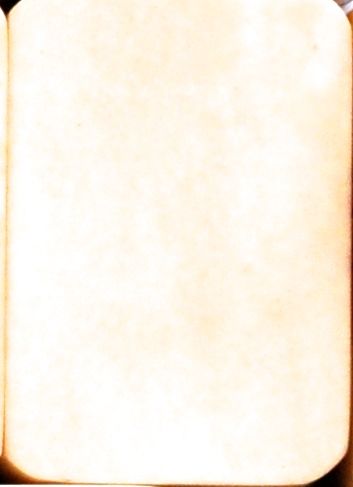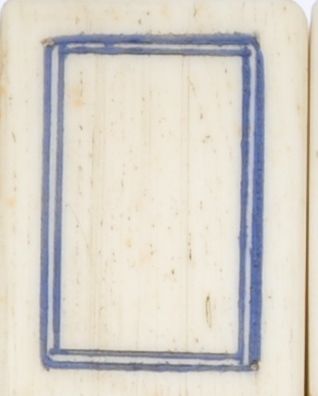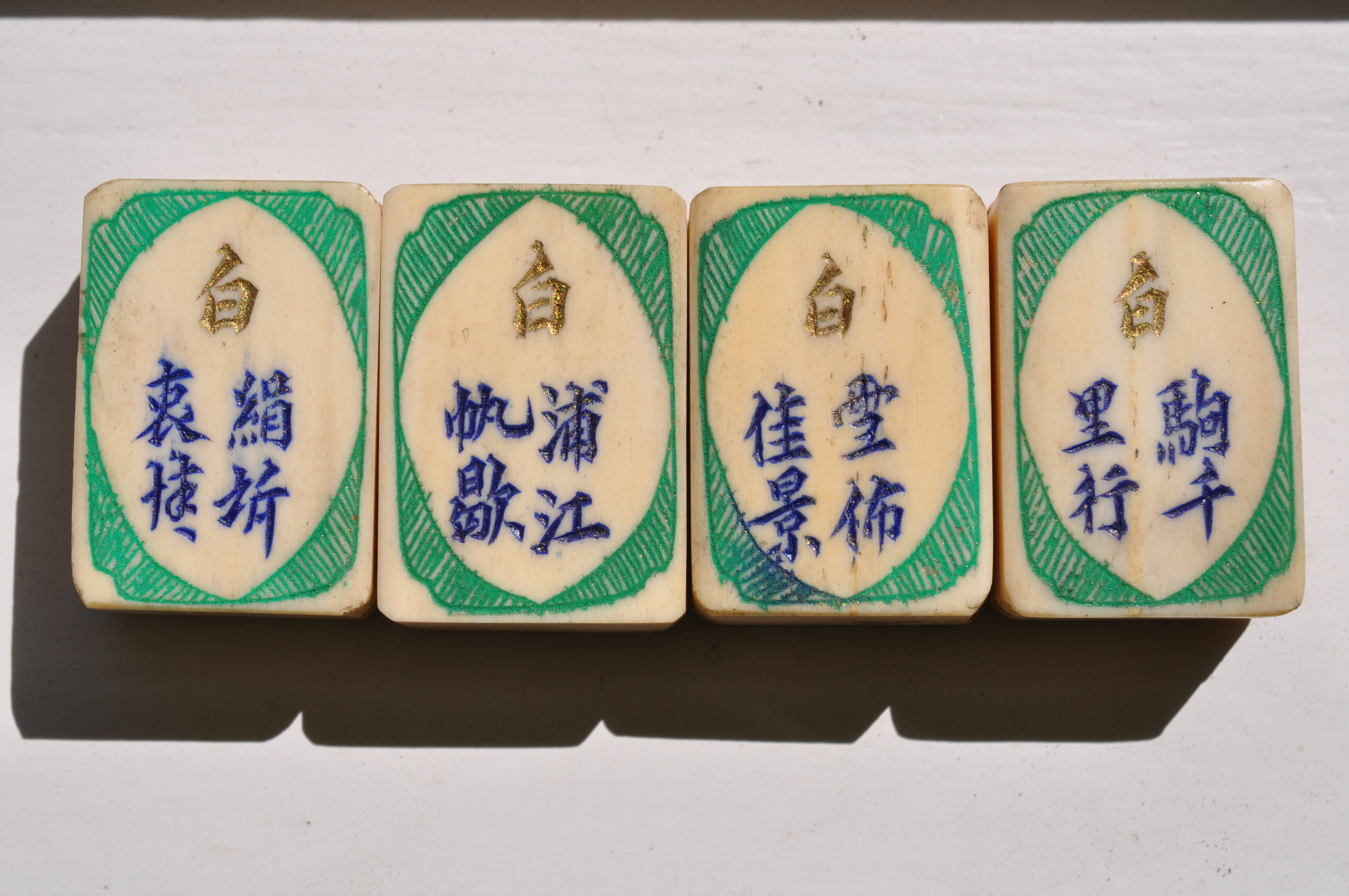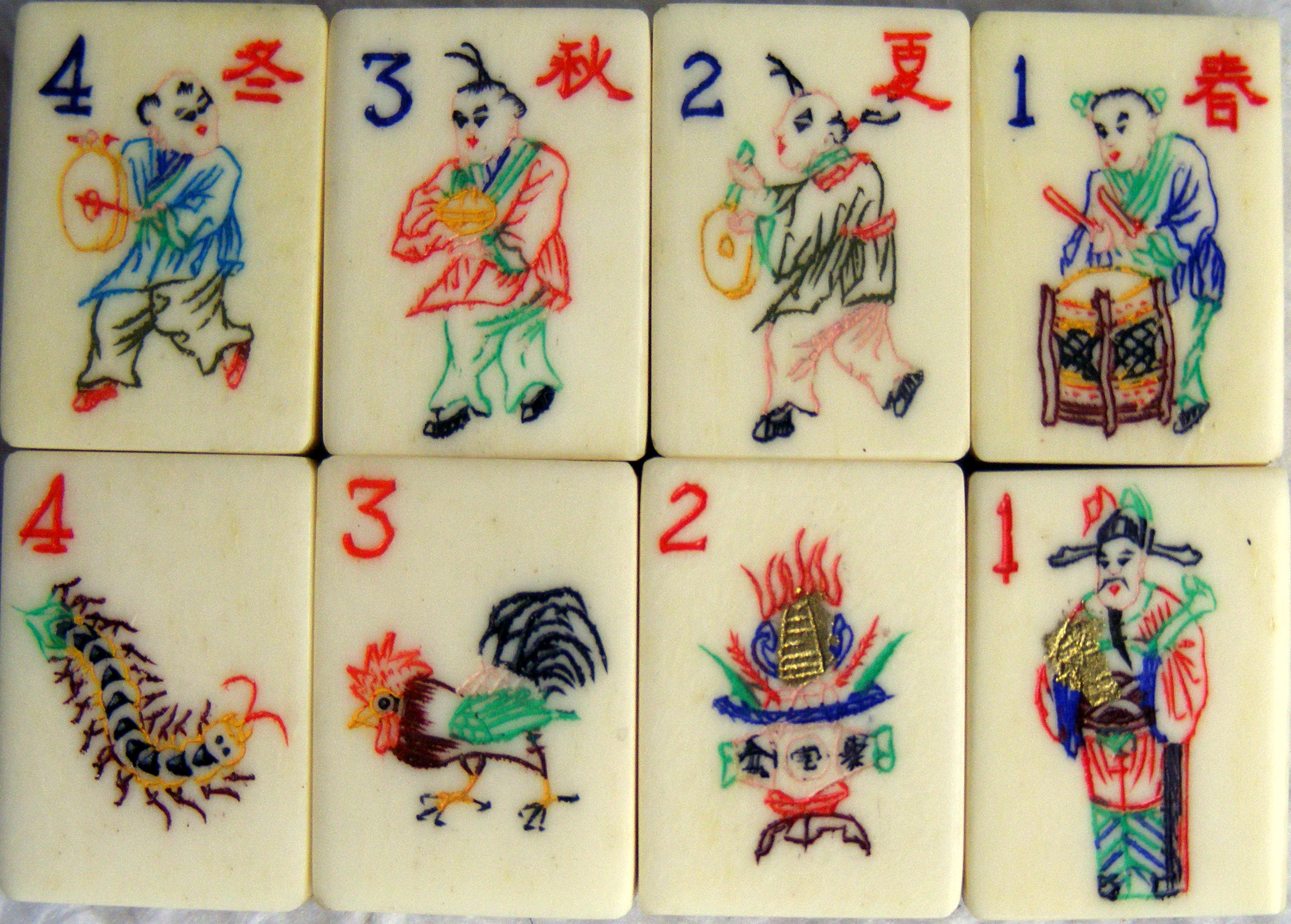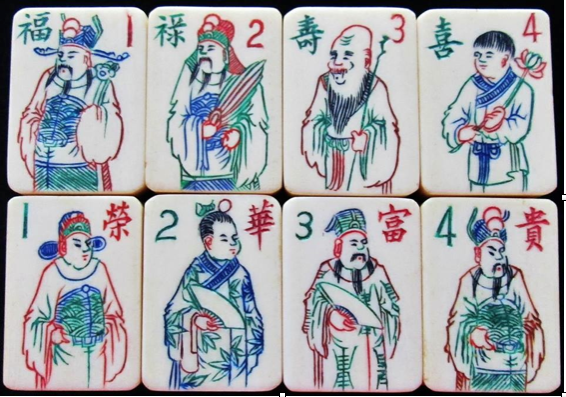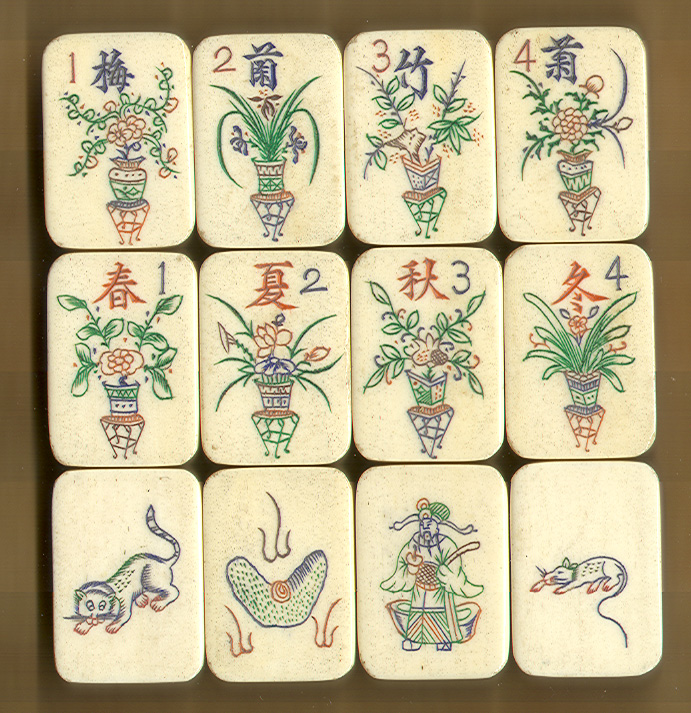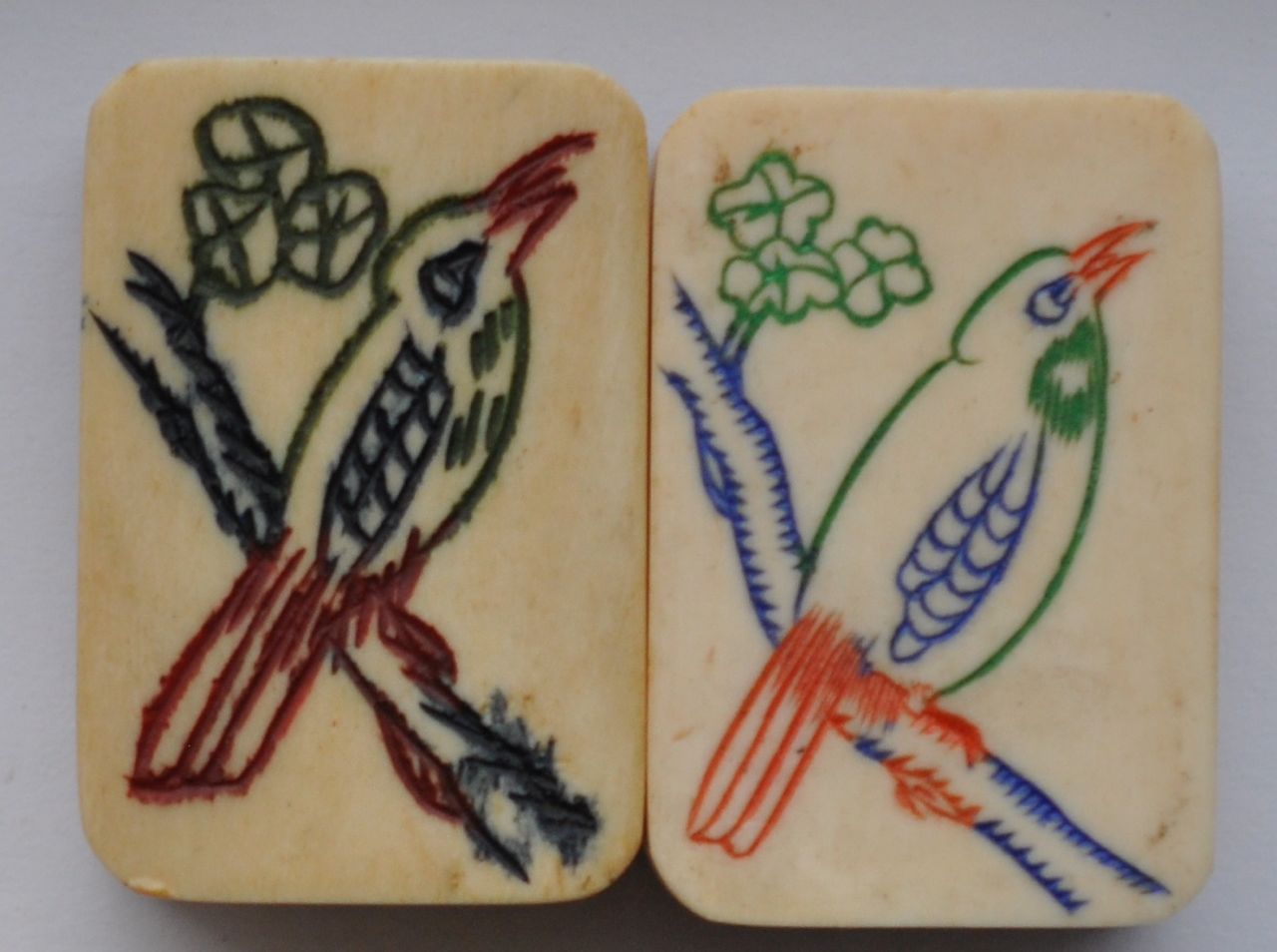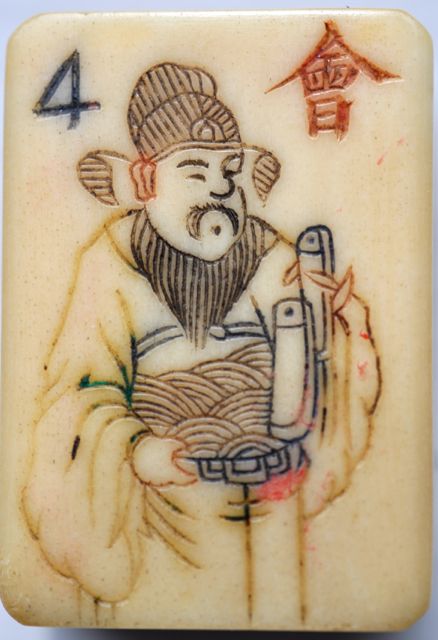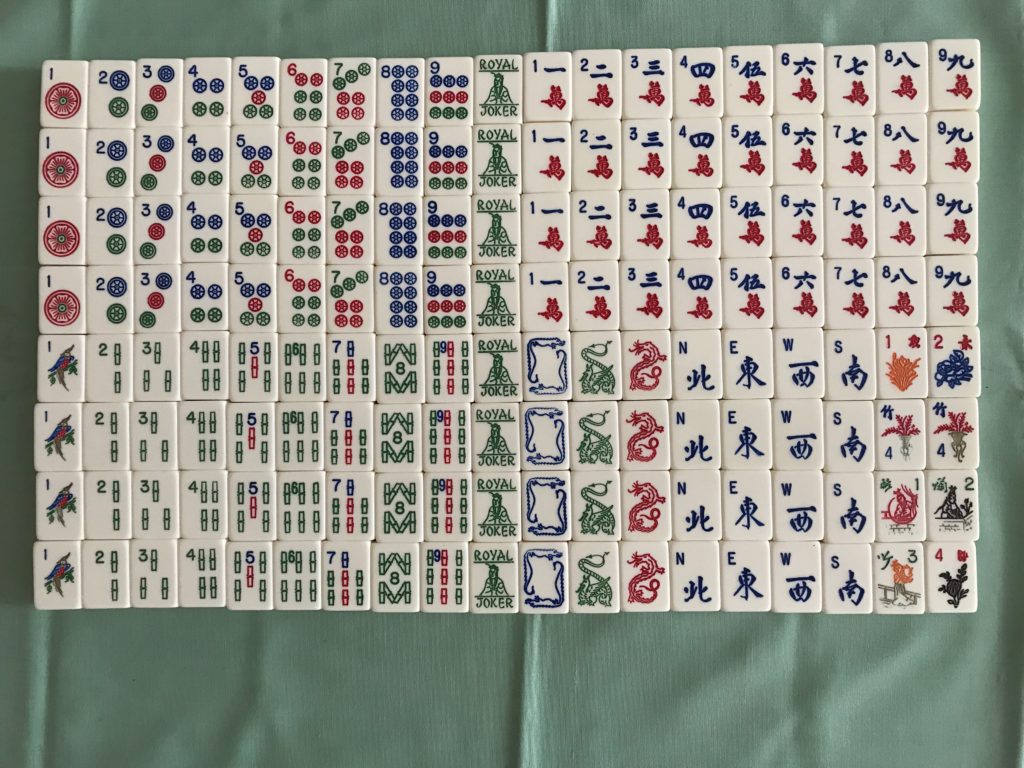 The above photograph shows a full set of tiles, 152, needed for National Mah Jongg League (NMJL) play. They have been arranged by suits, Honors (Winds and Dragons) Flowers and Jokers. There are 36 of each suit, Dots, Bamboos, and Craks (Characters), four of each, numbered 1-9. There are four of each Wind: East, South, West and North (E,S,W,N), four of each Dragon (White, Green, and Red) and eight Flowers. The NMJL changed the number of Flowers throughout the years, so there may well be more than eight Flowers. Jokers were not introduced until the 1960s (Flowers were the wild tiles before then) so your set may not have original Jokers the way this one does. Most versions of mahjong are played with 144 tiles (no Jokers.) The Japanese version, Rich, is played without Flowers, thus with 136 tiles. You will have to arrange your tiles this way to see if you have everything. You will be guided below on how to do this.
The above photograph shows a full set of tiles, 152, needed for National Mah Jongg League (NMJL) play. They have been arranged by suits, Honors (Winds and Dragons) Flowers and Jokers. There are 36 of each suit, Dots, Bamboos, and Craks (Characters), four of each, numbered 1-9. There are four of each Wind: East, South, West and North (E,S,W,N), four of each Dragon (White, Green, and Red) and eight Flowers. The NMJL changed the number of Flowers throughout the years, so there may well be more than eight Flowers. Jokers were not introduced until the 1960s (Flowers were the wild tiles before then) so your set may not have original Jokers the way this one does. Most versions of mahjong are played with 144 tiles (no Jokers.) The Japanese version, Rich, is played without Flowers, thus with 136 tiles. You will have to arrange your tiles this way to see if you have everything. You will be guided below on how to do this.
Most of the bone and bamboo sets made during the 1920s and 1930s had 148 tiles. Some Chinese Bakelite sets made in the 1920s into the late 1930s had 148 tiles as well. 144 tiles were used for play, and there were four extras in case of the loss of a tile.
Turn the tiles on their sides so that you can see if all of the bone and bamboo thickness is the same, or the Chinese Bakelite thickness is the same. Sometimes tiles that look the same from the front and back may show up differently when turned on their side. If there are pretty big differences, you probably have a tile from another set incorporated into your set.
Then organize them by suit.
There are three suits, and each suit has 36 tiles, (often) numbered with Arabic numbers from 1 to 9. Here follows the Dots suit:
You should have four of each tile, ranging from One Dot to Nine dots, as you can see above, and below:
Next comes the Craks, called that as the shortened version of the word Character, our way of saying any Chinese symbol for a word, as seen below. Here the Character is wan, which stands for 10,000 or many. The wan comes in several different versions.
You should have 36 Craks which may have the Chinese wan character (the red character at the bottom of the tile) looking like these above, or somewhat like these that follow:
Above are the simplified version of the wan, though done with a great deal of style.
And there are 36 "Bamboo" tiles, numbers 2-9 looking like this:
although the bamboos can be more rounded, here seen with the One Bam Bird
or have "barbs" on them, again with the One Bam bird
In the last two photos you have also seen One Bams, the carved birds. One Bams can be very different, one from the other, set to set. They usually are Birds, and there can be a great variety from one set to another, but there have to be four of them in each set, and they have to be identical.
You might get a songbird:
this perching bird:
a peacock:
or even a phoenix.
or a crane:
You might even see a Bamboo shoot:
Much rarer, but still possible, you might see a hawk on a globe. Although the round globe is there, looking like a Dot, this really is a One Bam.
There are four of each kind of Wind: North, East, South and West. Sometimes tiles have Western letters and sometimes not.
There should be four Green and four Red Dragons. The Red Dragons may look like this:
or this:
and the Green Dragons may look like this:
or this:
There are also four White Dragons which typically are plain white:
but may look like this, or a version thereof:
or it might have a B or a P. Just remember, there have to be four White Dragons.
Just to get things a little confusing for you, the White Dragons may be a bit different one from the other (if you have a really extraordinary set)
You will note on the set above the tops and frames are identical, but the other Chinese characters are different.
And then there are the Flowers, the tiles which often motivate us to buy a set of tiles. There should be 8 of them, but in some old sets there are only 4 tiles (and this may have been intentional) and if you are really lucky there may be 16. But the expected number is 8. Flowers may be Flowers, but they can also be other scenes, landscapes, figures, scenes, animals, birds in scenery, children, musicians, scholar's pursuits, four noble professions, etc. (Please look at other parts of the website where these themes are discussed.)
and here:
and here:
a more unusual set:
The above set of Flowers is unusual in that there are 12 Flowers, the bottom four being used for the Singapore capture style of play.
The tiles below show the four noble callings, (four main jobs in China) and the art of the scholar appear on the line below.
As you can see, the Flowers allowed the artists the most leeway, and thus are the most fun for those of us who collect.
And there should be 4 blank tiles. These would be used/carved if any tile went missing, such as was done here:
The new owner of the set considers this new tile to be part of the charm of the set.
Thus a total of 148 tiles. But 144 is ok if you just want to play by Babcock rules, and other ways of play. The extra four blanks are often used as Jokers by people who play by NMJL rules (National Mah Jongg League) although they have to scramble to find four other tiles to use as the other four Jokers. But that is where this author found one of her favorite tiles, hidden under a Big Joker sticker for 50 + years, a victim of a previous owner scrambling to find another tile to use as a joker for her set:
So, if you have any stickered tiles being used as Jokers, check them out!!! You may have the right number of tiles that you need, they just may have been covered up with a sticker for that time in history when a different make-up of number of tiles was needed for a game.
You can see more information about the variety of different tiles in sets on this other post
We thank Katherine Hartman, Laurie,Tony, and mahjongmahjong.com for the use of their tiles.


